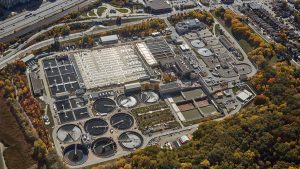While it may not seem like it at first glance, a significant number of items in the 2016 Ontario budget are inevitably linked to infrastructure, which means opportunities ahead for the industrial, commercial and institutional (ICI) sector, explains David Frame, director of government relations for the Ontario General Contractors Association (OGCA).
"The direction of the budget ends up reflected in infrastructure," he explains. "For instance, there’s going to be a greater focus on subsidizing university and college tuitions. Well that’s going to put a lot more pressure on those institutions to expand. Everything’s related."
Frame is referring to one of the main headlines that came out of Feb. 25 budget: the creation of the Ontario Student Grant, which will make "average college and university tuition" free for students coming from families with incomes of $50,000 or less, beginning in the 2017-18 school year.
Frame says there is a jump in infrastructure funding for post-secondary institutions from $385 million to $613 million in 2016-17. The budget states that over 10 years, $3 billion will be provided in capital grants to post-secondary institutions.
Overall, Ontario’s budget wasn’t full of surprises when it comes to infrastructure, Frame adds, but it was encouraging to see the province up the amount, committing $137 billion over the next 10 years to roads, bridges, public transit, hospitals and schools and an overall investment of $160 billion over 12 years, which started in 2014-15.
"In terms of projects, et cetera, there wasn’t a lot of new information, most of it was old information. It’s an outstanding budget from the infrastructure investment point of view," he says, adding the "last couple years, government has been earmarking up to about $13 billion for infrastructure and this year they’ve actually allocated over $16 billion."
Andy Manahan, executive director of the Residential and Civil Construction Alliance of Ontario (RCCAO), says with the federal budget slated to be unveiled March 22, he was pleased to see infrastructure was still a key priority for Ontario.
"There seems to be some alignment between Ottawa and Queen’s Park with respect to a real focus on infrastructure as a way to get the economy going," he explains.
Ian Cunningham, president of the Council of Ontario Construction Associations, shares a similar view.
"There’s nothing either alarmingly bad or surprisingly good. It’s pretty much hold the course," he says. "The boost in the infrastructure investment is nice. There may be, through these other business growth initiatives…some other construction spending as well."
Frame points out transit was still a major winner in this budget, jumping from $3.3 to $5.4 billion.
"There’s been numerous transit projects announced in the last year and they’re going ahead with it," he says.
"That $2-billion-plus number reflects the increased investment in transit projects. Clearly, the provincial government has continued, and to some degree for next year has expanded, its commitment for capital spending. That should be very good for our industry."
According to the OGCA, investment is needed in the ICI sector and the budget predicts growth in the non-residential sector, which includes heavy civil, by two per cent in 2016 and five per cent in 2017.
Cunningham says some highlights for him in terms of infrastructure investment include the $31.5-billion Moving Ontario Forward plan, $11 billion in capital grants for school boards over 10 years and $12 billion in capital grants for hospitals over 10 years.
Barry Steinberg, chief executive officer of Consulting Engineers of Ontario (CEO), says the dedicated funds for infrastructure are effective tools that will provide value to taxpayers.
"Queen’s Park is showing a commitment to sound, evidence-based decision making, and to dedicated revenue streams to fund these important investments. These are crucial to elements for delivering successful improvements for Ontarians," says Steinberg in a statement. "The Trillium Trust and the new Green Investment Fund will provide government a secure means to eliminate Ontario’s core infrastructure deficit."
Cap-and-trade and climate change were also key elements in the budget. The government is proposing to move to a cap-and-trade program that will increase tax revenue by around $1.9 billion this fiscal year, the OGCA highlights. The proceeds would be invested in green projects.
Part of the cap-and-trade program also includes an additional 4.3 cents per litre on gas, which will take effect in January.
Manahan states this program will help fund needed infrastructure.
"Some of the remedies or solutions for climate change are the addition of more public transit," he explains. "What we’ve been advocating for, for a long time…to a certain degree, will be implemented by the province. Infrastructure does have returns. It’s not going to happen right away, but the longer-term benefits of infrastructure will help the economy."











Recent Comments
comments for this post are closed